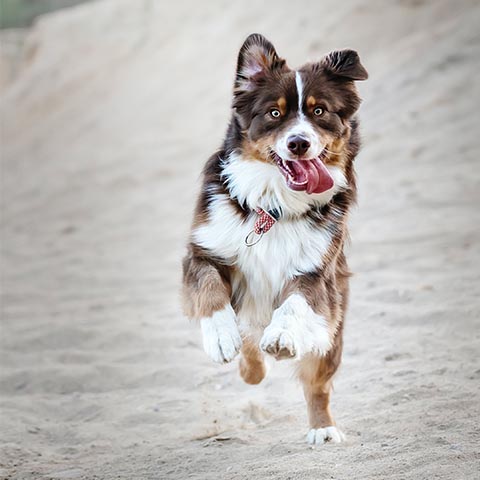Joint health is a concern for dog and cat enthusiasts due to a desire to keep our companions active and healthy. Understanding how healthy joints work help guide how we can help our dogs and cats maintain joint health throughout their lives.
Joints function to allow multiple bones to move together in a singular motion. Bones have articular cartilage on either end to prevent bone on bone contact. Joint capsules hold joint fluid in place where bones meet in order to act a as a lubricant facilitating movement. Hips, knees and the back are top of mind for many when we think of joints. When we refer to a joint, we are referring to the sum of two cartilaginous bones in an intact joint capsule with synovial (joint fluid).
What then causes joint pain?
Cartilage prevents bone on bone contact. When nerves on bone are exposed (as cartilage is lost) pain occurs during bone on bone contact. There are degenerative (age related) changes, infectious (bacterial, fungal and viral) causes, immune mediated, traumatic/sport related injuries and cancer types that affect bones, cartilage, synovial capsules and synovial fluid. Degenerative changes known commonly as osteoarthritis or arthritis are a very common diagnosis in mammals including dogs and cats and people.
What do we see clinically in our pets experiencing joint pain?
Animals may hesitate to climb stairs, jump onto the bed or couch, jump into a car, limit time at play or have trouble posturing to urinate or defecate. These signs may be worse in the winter as it has been hypothesized that joint fluid can become thicker and joints “stiffer”.
What can be done to alleviate joint pain?
It is important to diagnose the underlying cause of joint pain before a proper treatment plan can be formulated. Having your pet examined by your local veterinarian is the first step to determine the cause of joint pain.
There are a few universal truths. Hips and knees are weight bearing joints. The more your pet weighs, the more weight those joints have to bear. Maintaining a healthy body weight will optimize the body mass or weight that joints support. This can be easier said than done.
Joint pain may make pets unwilling to move. When it comes to joints there is a saying that motion is lotion. Increased exercise helps loosen joints that feel stiff and increased exercise helps to burn calories. It is best to start with short frequent walks and then gradually walk longer distances. There are also ways to get more exercise indoors. Pets can be fed one serving of a meal in multiple bowls throughout the house so that your pet must walk from room to room for a full meal. There are also food toys that dispense dry kibble as the toy rolls.
Glucosamine and chondroitin sulfate are compounds found in cartilage and joint fluid. They function in regulating cartilage synthesis and providing building blocks for the formation of cartilage. Diets containing these compounds may provide a constant source of these joint supporting nutrients to help maintain joint health.
Focusing on your dog or cat’s joint health will benefit your long-term relationship. Consistent veterinary care, exercise and a diet that supports an ideal body condition and provide supporting nutrients are fantastic steps to incorporate in your pet’s healthcare.
